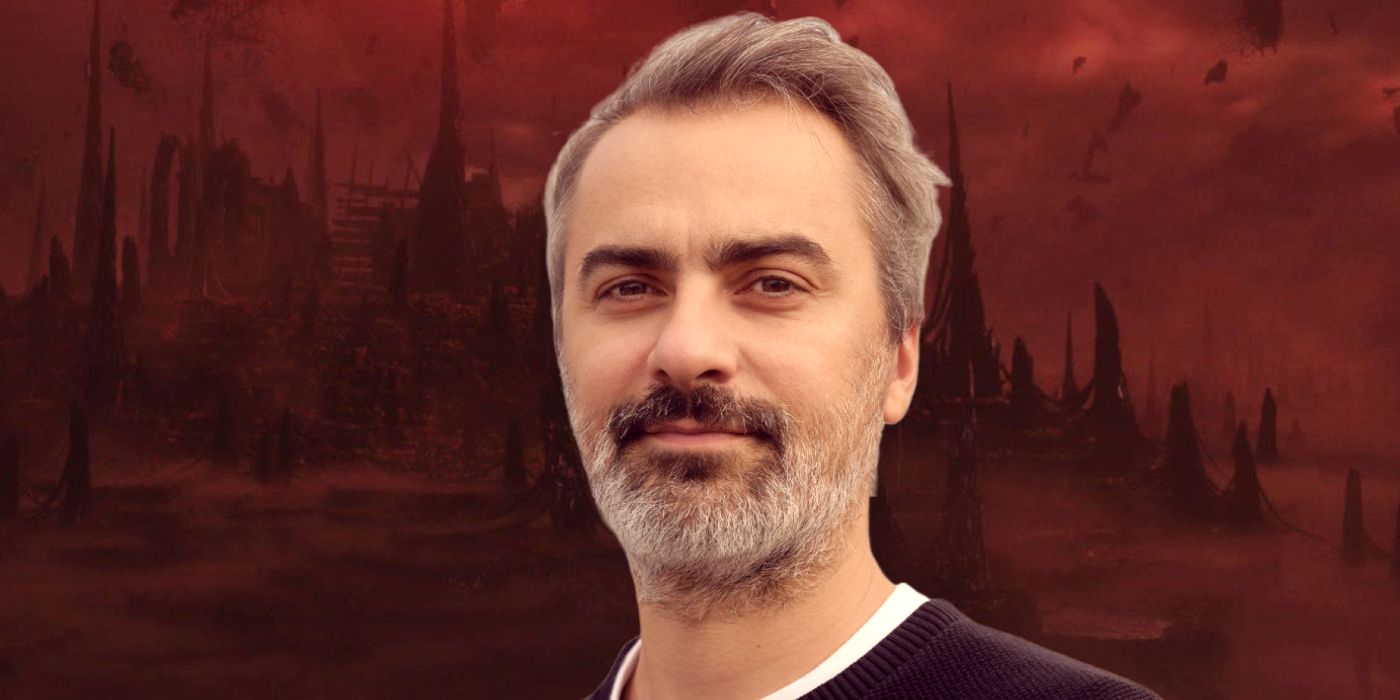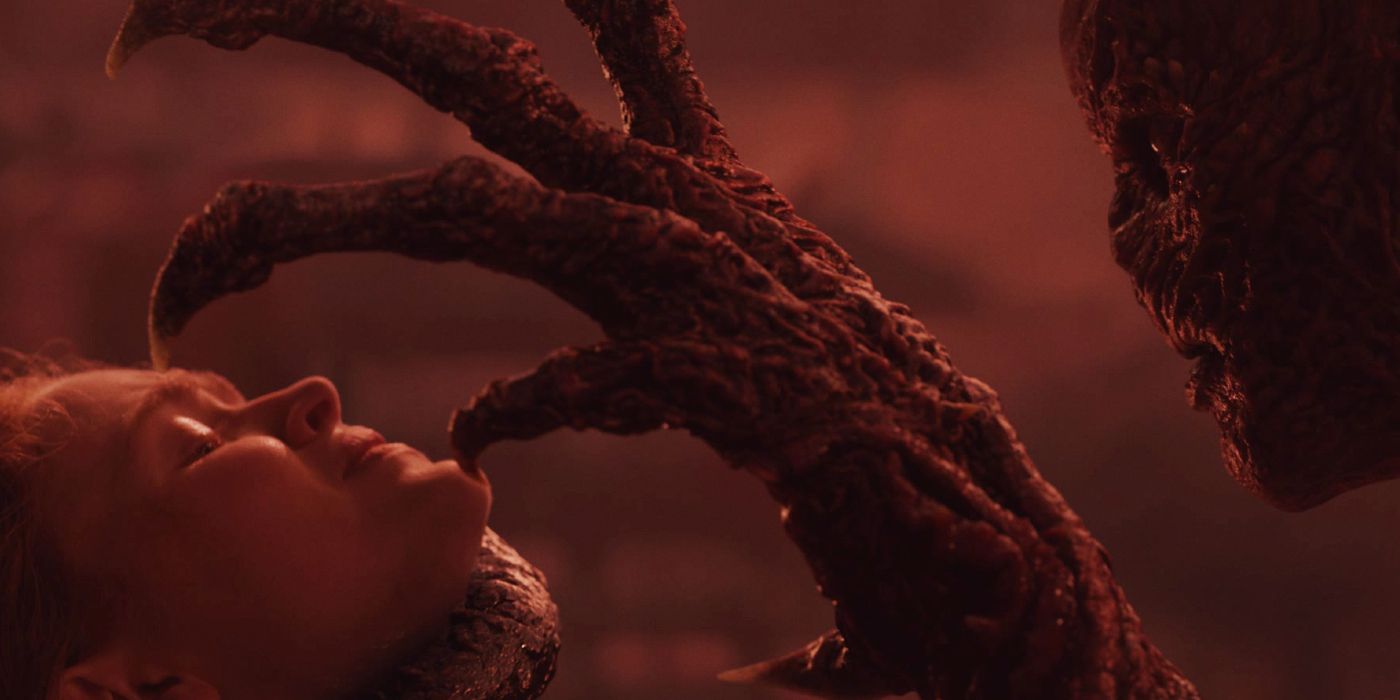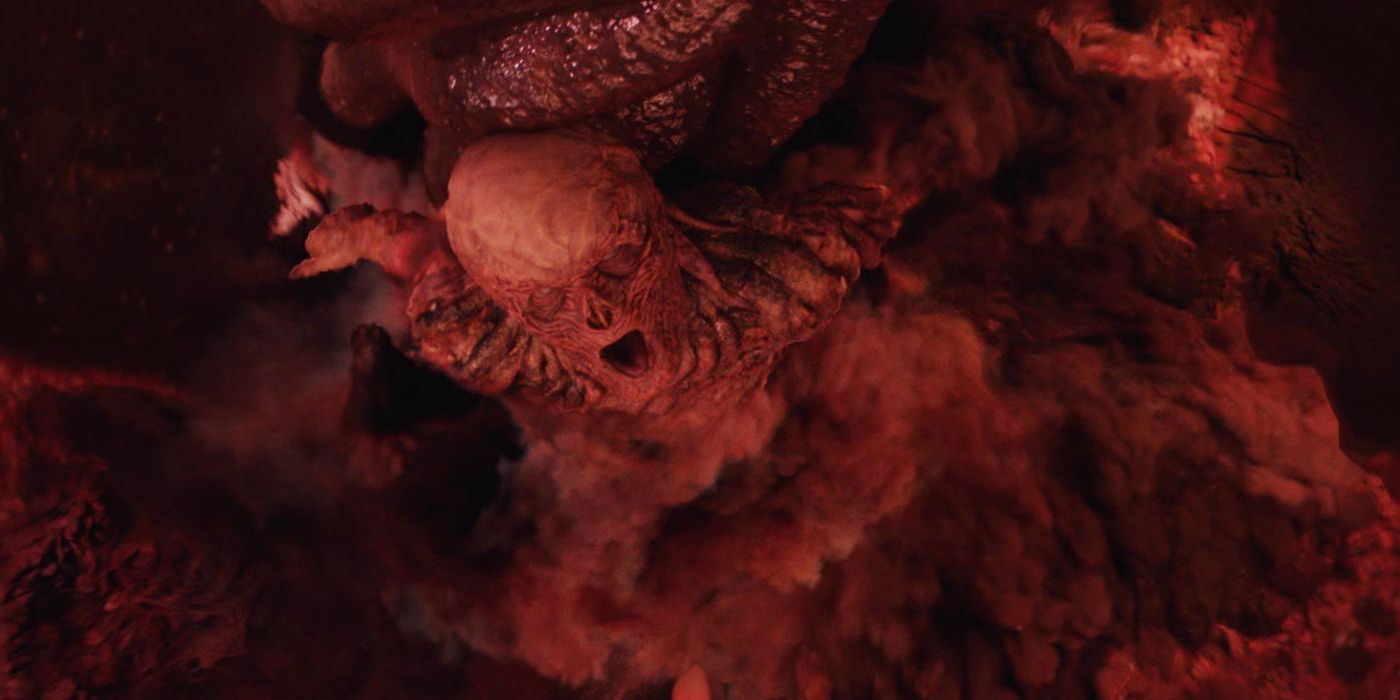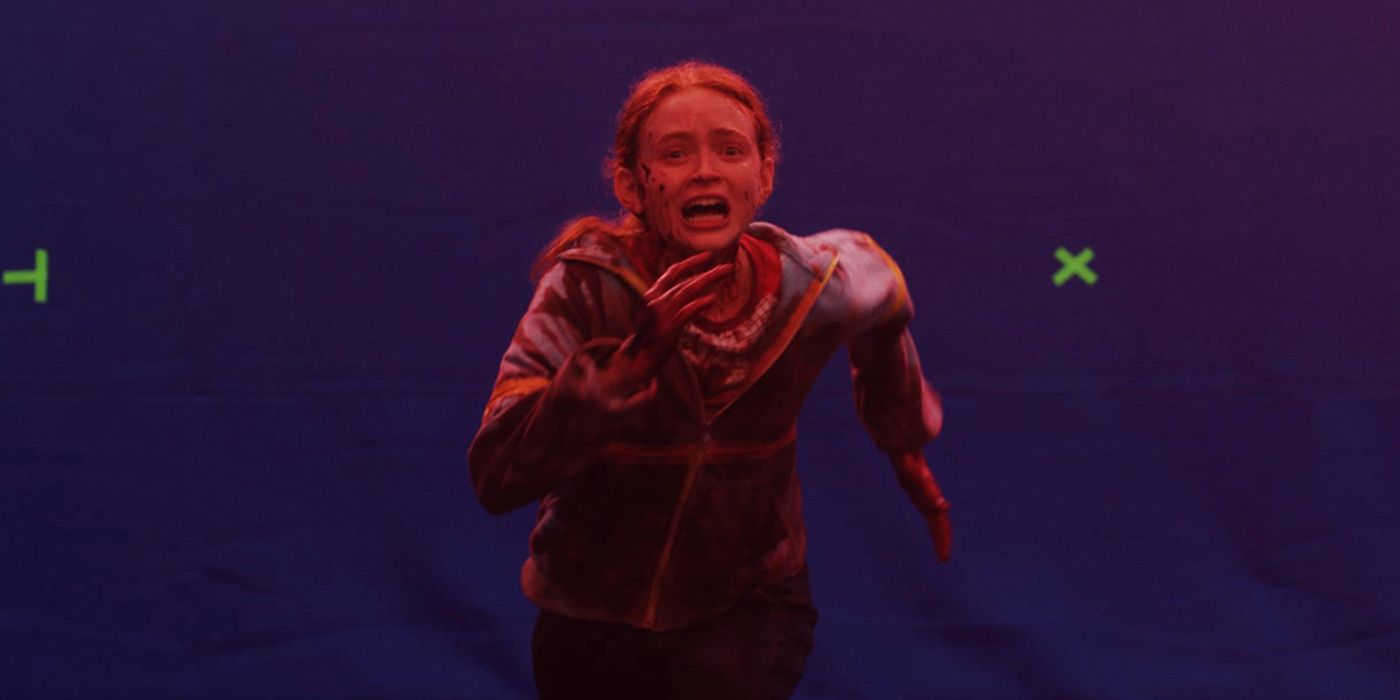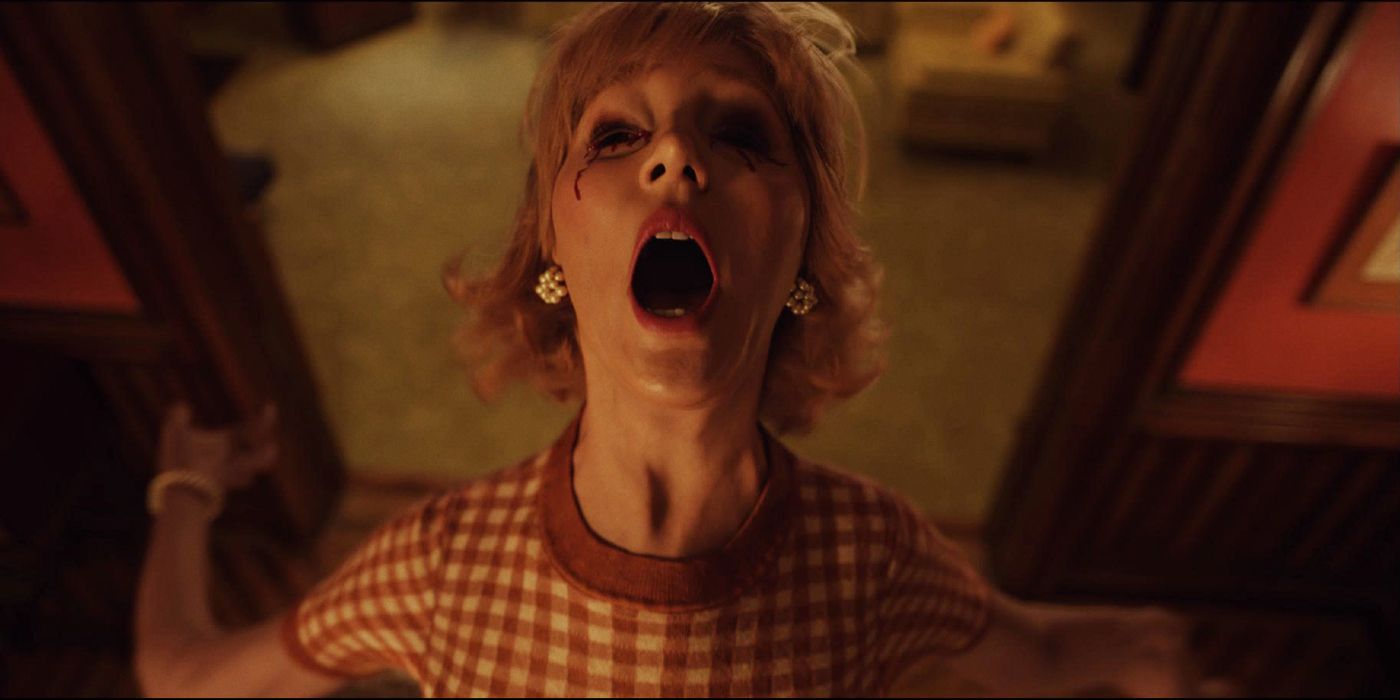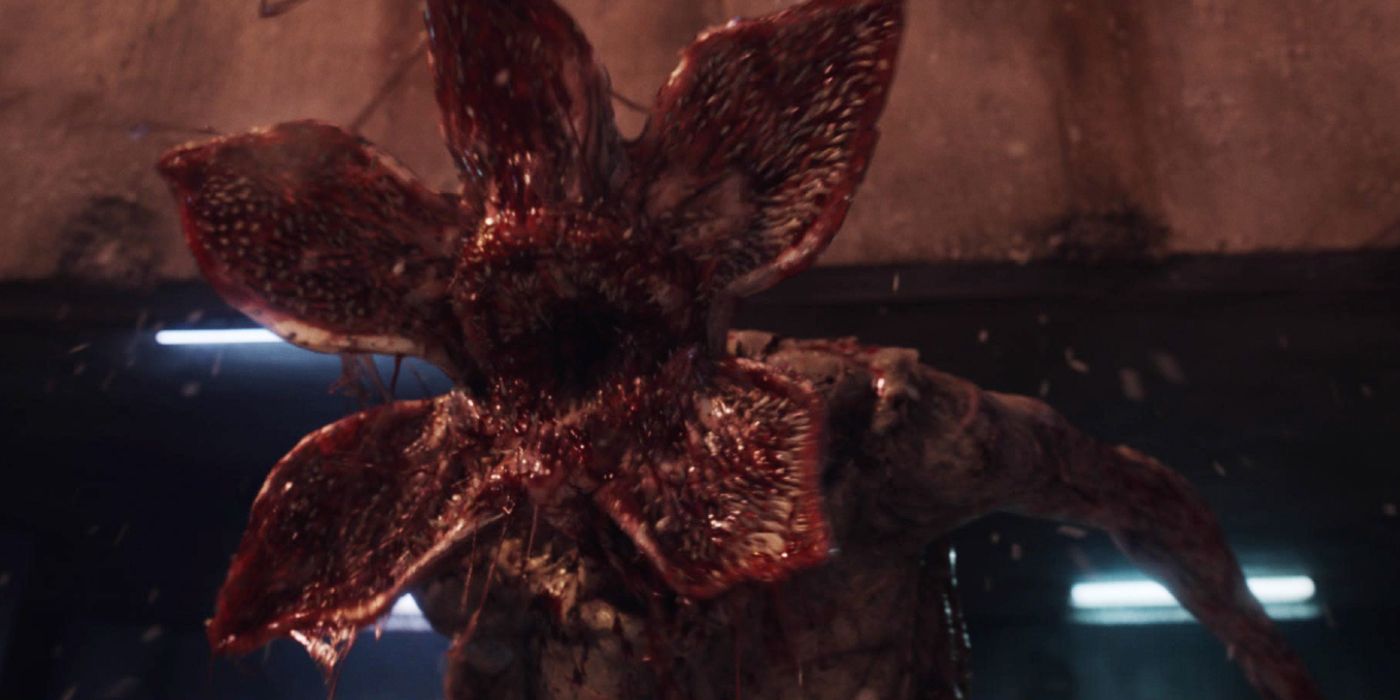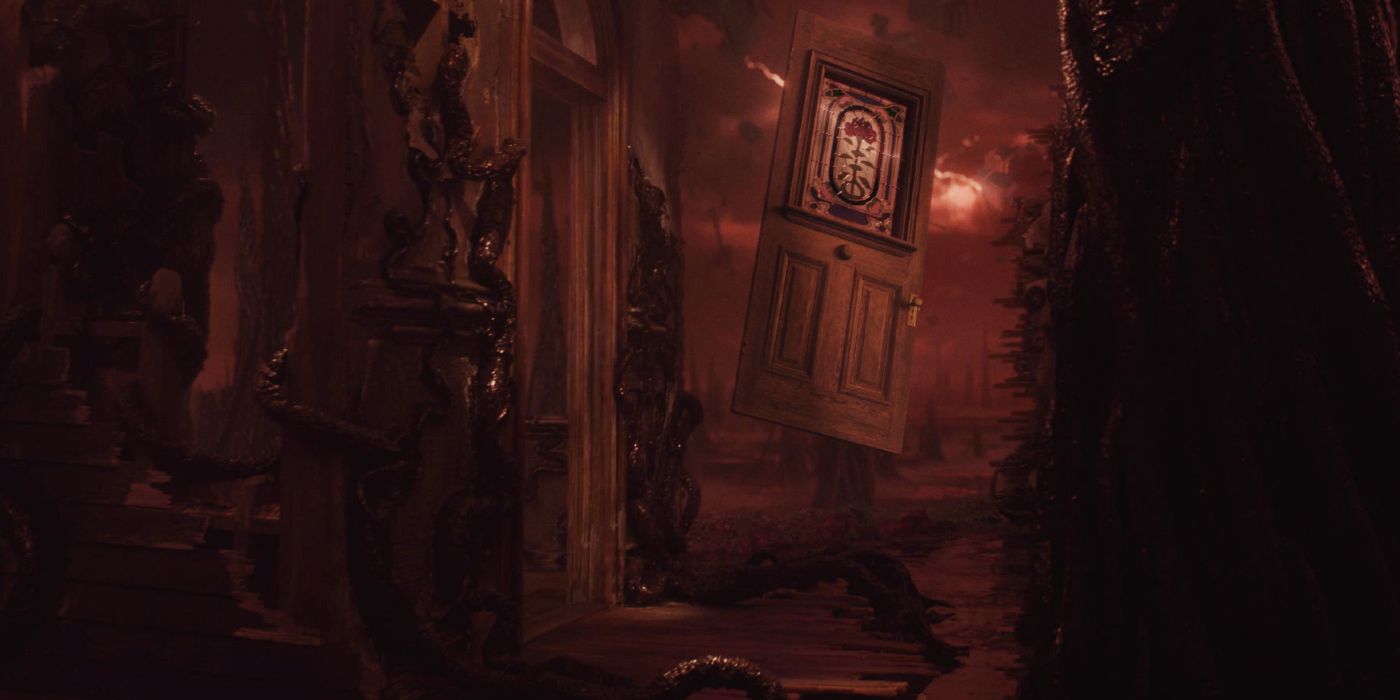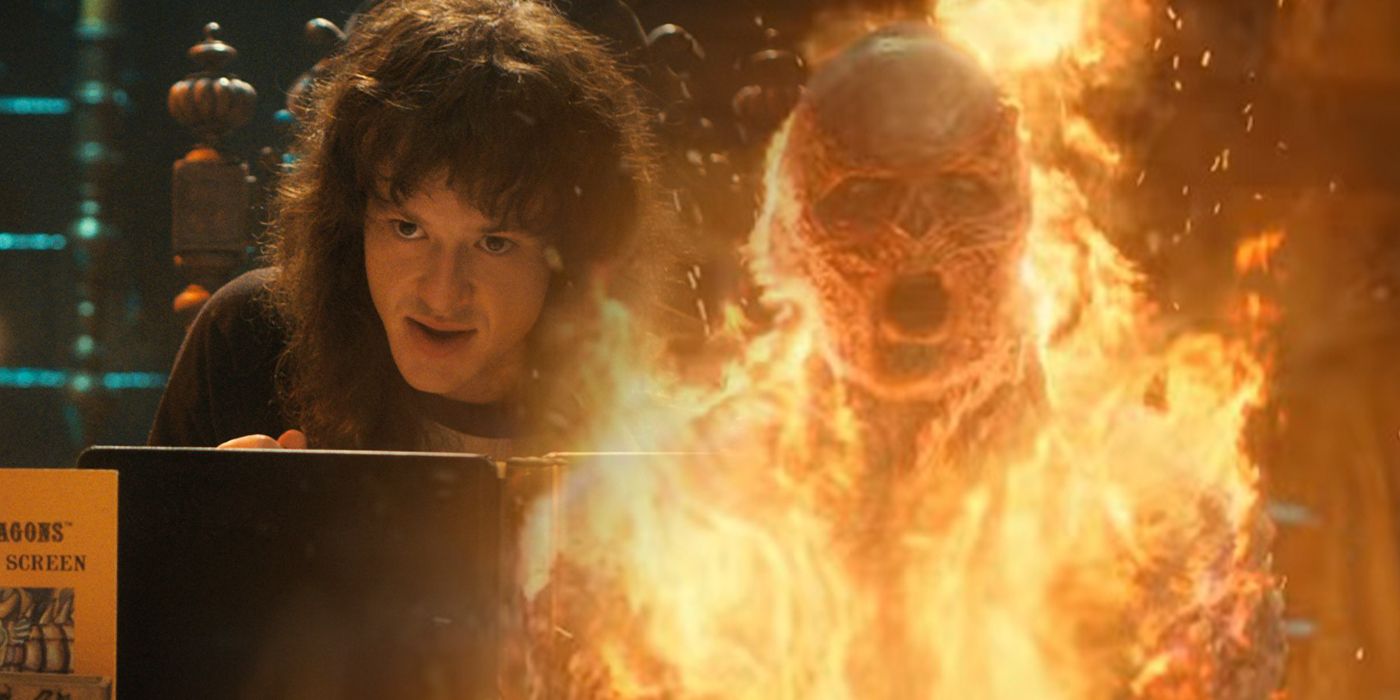Stranger Things season 4 featured some of the best visual effects in the history of the show so far. The Upside-Down, the terrifying realm that plagues Hawkins, remained in the shadows for the first three seasons of Stranger Things. All that changed in season 4, when the boundary between the Upside-Down and the real world of Hawkins finally began to break open—at a time when the town was without its champion, because Eleven was off on a mission to regain her powers.
In terms of visual effects, Stranger Things season 4 was easily the most ambitious to date. Where the monsters had previously been mostly concealed, now they were operating in the open, including in a number of confrontations between various characters and Demogorgons in a Russian prison. Meanwhile, Stranger Things season 4 introduced Vecna, the true power behind the Upside-Down and the force responsible for creating the Mind-Flayer. New characters, creatures, and environments tested various visual effects studios, and the show has rightly earned an Emmy nomination for best visual effects.
Screen Rant had the opportunity to speak to Julien Hery, visual effects supervisor at Rodeo FX, who played a key part in bringing these concepts to life. He revealed secrets of Vecna, the Demogorgon, the Demobats, and even the Mind Lair in which Vecna preyed upon his victims.
Screen Rant: First of all, congratulations on the Emmy nomination. So deserved!
Julien Hery: Thanks a lot. It was a crazy year for VFX, pretty insane.
Screen Rant: I'll bet! For the benefit of our readers, could you begin by giving us a quick rundown of your involvement with Stranger Things?
Julien Hery: I'm a visual effects supervisor at Rodeo, we began work on Stranger Things about two years ago, I worked in collaboration with the people at Netflix, including Michael Maher. I was supervising the show at Rodeo, we started more than two years ago with the first teaser when they revealed Hopper is alive in Russia. We started doing shots - I think it was before WandaVision, we started on the show, then Covid happened.
During Covid, it was on hiatus, so it was rather quiet. It allowed us to start to work on some of the main things we did on the show, building all the creatures. We built Vecna, the Demogorgon—what I like to call the Demogorgon 2022 Update, making it up to the standard we all know now in VFX. Same thing for the Demodog, and creating the Demobat that arrives this year. We built those assets during Covid, and then starting on the show, building many shots. I think we worked on around 400 to 500 shots on the show.
Screen Rant: I thought we'd start with some of the creature designs, particularly Vecna. That design was absolutely stunning. How did you guys come up with that?
Julien Hery: I think it's a pretty cool collaboration between the practical work and VFX. There's always this war over who did what, and I think this time it's a very nice collaboration between every department. It all started with concept art from Michael Maher, the art director on the show. He did drawings, but also rought 3D models to showcase. The basic idea was that he's a tall guy, all mutated, huge hand... He designed the creature, then they came to us.
We transformed this model into a 3-D asset, adding all the concepts of vines on the body and adding more detail. Once they were happy, they scanned the Vecna actor [Jamie Bower] with 3D scanning so we could fit Vecna to his body. Because it would then become a suit, so it needed to fit his body morphology. We kind of constrained the model to make sure it matches with Bower.
Once we did that, we provided that to a U.K. company who 3D printed this as a latex suit. They added enormous detail, painted all the veins and details of the skin, and it started to become alive as a practical suit. Once they'd done with that, they scanned back Jamie Bower in the suit, and we remodelled the asset to match what had been built, with all the colors and skin details. We also added things that couldn't be done practically; all the moving parts and vines moving across his body. Then we cut the nose.
And then, when we were doing the shot, we matched all the motion of Vecna with the asset, we decided which part would be a plate and which would be 100 percent prosthetic. We drew the line where the blend would be.
Screen Rant: That sounds tremendous. Now, one of the environments associated with Vecna was the Mind Lair. How did you create that?
Julien Hery: Yes, it's the Mind Lair. It's kind of the same idea. We started with this concept art from Michael Maher, we had a couple of frames of this very foggy and mysterious environment, very red, a graveyard of Vecna's memory and where he would put all his victims. So we had that as an idea, we started to create the environment in 3D, almost an infinite environment with what we called the spires. We also took the Creel House, we'd built CG for a few shots, but we took it and broke it apart in the sky to create the Creel House. So all the debris you see in the sky are kind of parts of the Creel House.
It was very interesting to work on. The first couple of shots - they filmed the set pieces, like little islands that we built practically and extended across infinity. On the first establishing shots, they need to be wide so you have a full view of the environment, the studios are very big but not big enough to showcase environments. So we were looking at trying to make something wider, so we can focus on the environment. We asked Deak Ferrand, our art director at Rodeo who worked on Dune, and he told us to look at the work of Wayne Barlow, who has a piece called Inferno. He guided us to this artist, we took ideas from this composition for the wide establishing shots.
And then plenty of effects work at the end of the sequence, where Max is running away on the famous Running Up That Hill. And now we had a lot of effects work, so Vecna is chasing Max, throwing parts of the house at her. It's a very interesting effects simulation, where we simulated debris exploding, the ground creates splashes of blood that move the fog on the ground. We have three parts; intricate parts of the simulation, moving. We also body-matched Max, so we could have her interacting with the fog on the ground as she ran.
Screen Rant: I suspect you used body-matches as well with some of Vecna's curse scenes?
Julien Hery: Yeah, there's a tremendous amount of work going on in those shots. This is the most high-resolution digi-doubles that we did at Rodeo, we started with plate work with the actress, that gave us ideas of what it would look like for real. We started with scans of the victims, and the same work for those. We built them so high-res that each skin pore was modeled. We groomed the hairs to match the actors, we also groomed the face, all the tiny hairs that are there on the difference, the blood accumulation on the skin, we modeled so much. We built the layer of water on top of the eye, because those shots - I'm thinking about Chrissy, those shots are full CG shots, there's nothing coming from the plate, we basically erased the actress and added a full CG model.
There was also research. All the bone-breaking - we researched on the internet for the worst injuries we could find, for example with football players. We knew we didn't want open wounds, we wanted to break bones but it had to feel nasty without being nasty and gory. We researched those, with football players and fighters. We researched all these injuries, not open wounds but very gross to look at, and then we started to model each break and give it a sense of all the different layers; the fat, how you can see the bone affecting the fat layers and touching the skin. It was an amazing piece to work on, very interesting to work on those ones.
Screen Rant: It sounds quite nightmare-inducing as well!
Julien Hery: Yeah, for each project you become a specialist in a domain. It could be bone-breaking, and the next project can be TV patterns for WandaVision, and the next project is gonna be trees in New Zealand, you name it. Each time you wind up specializing in a subject that I don't think I'd have ever studied.
Screen Rant: Moving back to some of the creature work again, you mentioned you'd updated the Demogorgon for 2022. What did that involve?
Julien Hery: It was a very interesting process. We started with a creature that everybody knows; you can't change it that much, with its famous head and the petals, you can't touch that. But then you have to do more things this year. Previously, he was standing, moving a bit, mostly in shadows. This year, he'll have to run on all fours, stand up and become a biped, fight, jump... Everything will have to be close to the lens and visible. We started with animation tests, we took back the creature from season 3, and we basically did stress-tests. We asked if he could run; no, because to run on all fours we'd need shorter arms, maybe the angle is too big, we did small changes that you won't really notice. But we changed all the proportions of the creature, so it would make sense when he ran and jumped, instead of having a creature you couldn't believe in.
We tried to base it on reality; how a monkey runs on all fours, because its arms are longer, and you infuse a bit of reality in that creature. It helps believability. Then we revise the shape of the head, refine all the skin detail, we needed it to be much more detailed and precise. It's the same creature, a revamped one, it has to be one that was in a prison, so it has to feature scars, blood accumulation so it would have dry and wet blood, we redid all the texturing work with much more detail. All the modeling has been redone, everything has changed. And now you can see it.
Screen Rant: Absolutely brilliant work. One shot I really liked was where Hopper is on the run, and the Demogorgon roars; you can see the petals unfold, and the mouth. It's clearly pure CGI, but it felt so real. How did you make the petals around the Demogorgon's mouth work so well?
Julien Hery: It's a collaboration between animation, rig - the department that create the skeleton to make it move - modeling, who provided us all kinds of possibilities. When the Demogorgon is breathing, the lungs are going to become bigger, and the stomach a bit smaller, all those mini-contractions. The throat is going to change, when he's roaring, you know? We can inflate the throat, the same with the petals, controlling how they bend and vibrate. Animators can play with that, so you feel the air going into the throat, the lung vibrating, all the petals vibrating. It's all frame-by-frame animations. It's all these small details, that when you add them together, you believe it because you see all the things you'd expect - the throat moving, the cheek moving.
Screen Rant: One of the remarkable things was seeing it interact with characters and the environment, making it feel very different to what we've seen before. How did you manage to make that work and make its movement so fluid and well-timed against the actors?
Julien Hery: It depends on the shot. We have a shot that's close-up, where the Demogorgon is jumping on the back of a guard and grabbing his head. With that, on the plate we had someone in a green suit jumping on the back of the actor so he had real weight, you can feel the weight on his back. We erased the green-suit-guy, then we body-match-move the guard, so we know how he moves. Then we can have our creature interacting and playing with his head. For most of our shots, we had to body-match-move the guards, so we knew where they are, the relationships and distances, so you weren't running too fast or too slow.
There was no snow on the day. To help us integrating the shots, they didn't shoot those scenes with snow falling. So we added back all the snow in CG, and we even simulated the snow, so the Demogorgon creatures a field around him as snowflakes interact with his roaring, with his breath. The snow on the ground was practical, but then we added some more, the interaction with the Demogorgon. Each time he moved, he displaced snow on the ground, all those small details that make it believability.
Screen Rant: Now, let's focus for a moment on the Demobats, the new creatures. How did you create those, and how did you manage to make them interact?
Julien Hery: So, the Demobat was an interesting process. It started with concept art from Michael Maher, we took it and modeled it in 3D, testing it in animation to understand its movement so we could find the proper proportion of the creature. It walks like a spider, so it's nice and nasty, so we have to make the legs allow that. The wings accommodated for that so they didn't look too flappy when it was walking on the ground. The tails were hard, because they were used as a device to steer in flight, but also it would be fighting with it, strangling people. Then we looked back at morphology of insects, birds for the wings; how the vein-system of the wings works in real bats, birds, and insects, infusing as much of these details as possible to that creature.
We didn't actually do the strangling shots, that was another vendor, but the same ideas were used - body-match-moving so you know his motion, and can place something on his neck. It's the same idea for the Mind Lair, when Max is being choked with the vines.
Screen Rant: I believe I read that one VFX shot took two years to make. Can you tell us a little about that shot, and why it took so much work?
Julien Hery: In VFX, things don't take time because you're doing it wrongly, but because you're experimenting. On WandaVision, some things took a year turnaround, as you try ideas out. That's nerve-wracking sometimes, but it's very interesting to try ideas. This shot started before the pandemic, nothing was shot, we just had the idea of a flyover of Hawkins ending at the Creel House. There was a lot of work being done in building it based on photographic reference. Then we built and animated the bat. You were in the position where the shot was looking nice, but the plates came in as shooting resumed, giving us more information so you re-tweak the animation. The mood has changed a bit, more foggy and fiery. We didn't work every day on this shot for two years, but rather kept reworking it for two years. Sometimes you just have to allow for creativity to happen.
Screen Rant: How did you make the Creel House feel so absolutely creepy?
Julien Hery: We started with the photography from the real Creel House, because it wasn't shot in the Upside-Down - we only had the Right-Side version of the Creel House. It looked like an abandoned house, wood layers, blocked windows, vines across the environment of the Upside-Down that we layered. There's a whole lot of work in those, the vines and the stretch lines - the yellowish membranes on top of the vines, and then mold scattered around the vines. All this made it pretty gross.
Screen Rant: What would you say was your proudest part of season 4?
Julien Hery: It's hard to choose. I think one that's very nice for me is the Mind Lair, the audience reaction to the sequence. That's what's cool to see, as the audience care about it, it means you made it work. Even in a VFX-driven show, it's always nice when you don't talk about the visual effects but the mood and atmosphere, because you're caught up and the effects gave you the proper feeling. There's plenty of things we're proud of, but seeing this reaction from the fans is very cool.
Stranger Things Season 4 Synopsis
It’s been six months since the Battle of Starcourt, which brought terror and destruction to Hawkins. Struggling with the aftermath, our group of friends are separated for the first time – and navigating the complexities of high school hasn't made things any easier. In this most vulnerable time, a new and horrifying supernatural threat surfaces, presenting a gruesome mystery that, if solved, might finally put an end to the horrors of the Upside Down.
Check out our interviews with Stranger Things stars Noah Schnapp, Charlie Heaton & Eduardo Franco, Robert Englund, as well as Joseph Quinn, Jamie Campbell Bower and Caleb McLaughlin, Gaten Matarazzo, Sadie Sink & Priah Ferguson.

